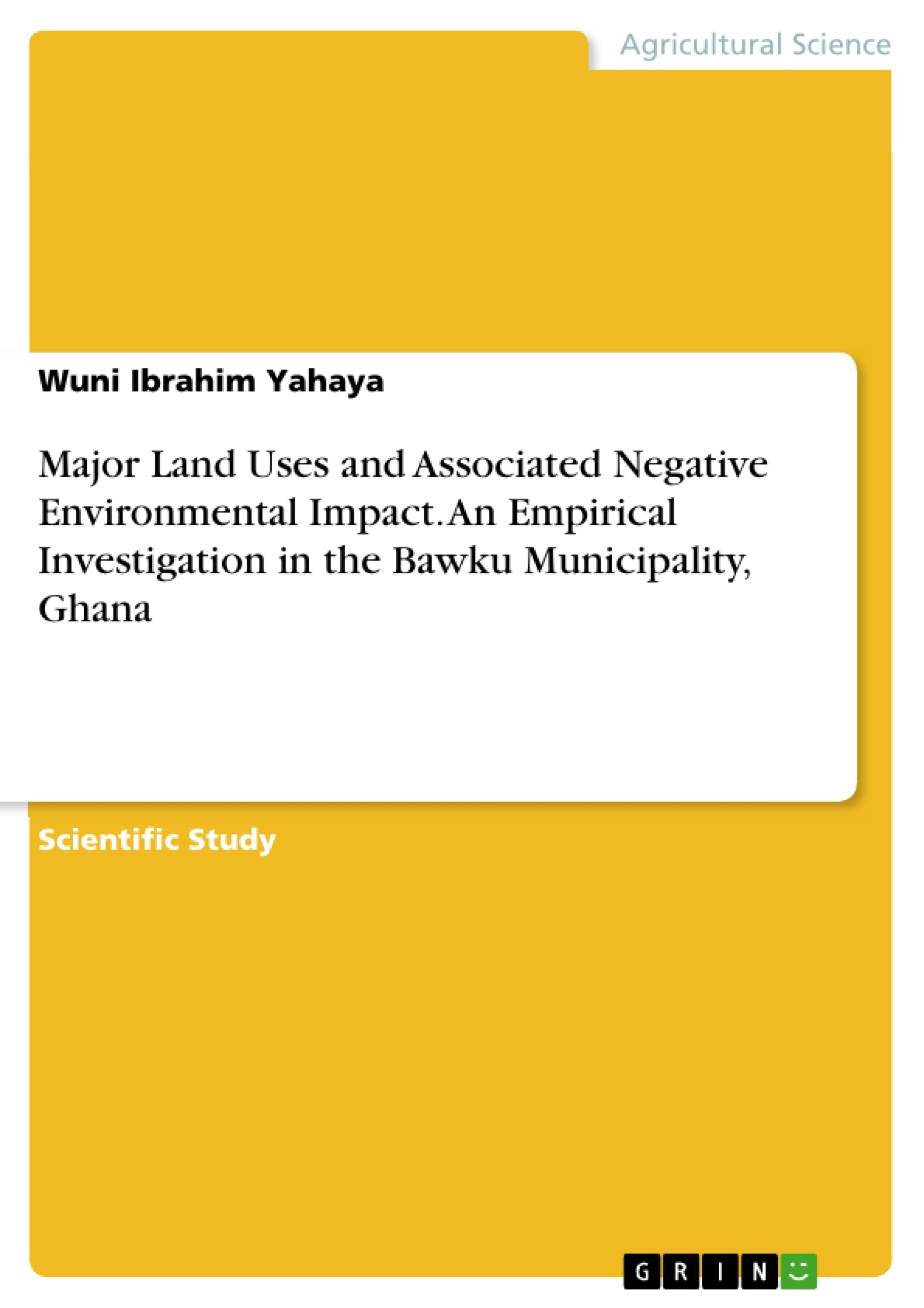This article empirically explores the environmental impact of agricultural, residential and commercial land uses in the Bawku municipality.
Questionnaires, researcher’s observation, individual and group Interviews as well as focus group discussions were the survey instruments used to collect the primary data for the study from 150 respondents comprising farmers, home builders, hunters, shop keepers and stakeholders.
The study established that most of the inhabitants questioned - 147 or 98% - are not aware of the necessity of environmental permission for a certain size and quantity of land uses. The study also established that nearly all the inhabitants did not understand the negative environmental impact of their land use activities. The study also attributed the unhealthy environmental practices of the inhabitants to indiscipline on the part of the land users.
The study identified that the negative environmental impact of the various land uses included threat to the ecosystem, depletion of the ozone layer, destruction of rare plant, tree and aquatic species and the general extinction of some rare plant and tree species. The resulting social and economic effect of the environmental destruction included threat to human survival, drought, harsh weather and climatic conditions and health related problems.
In response to the causes of the unhealthy environmental practices, the study accordingly presents a number of recommendations including creating awareness of the need to acquire an environmental permit before commencing particular land uses and educating the inhabitants on the need to conserve the environment.
Inhaltsverzeichnis (Table of Contents)
- 1.0 INTRODUCTION
- 2.0 RESEARCH METHODOLOGY AND MATERIALS.
- 3.0 PROFILING THE STUDY AREA......
- 4.0 RESULTS AND DISCUSSION OF FINDINGS
- 4.1 Bio-Data of the Respondents
- 5.0 THE REFLECTIVE SOCIAL AND ECONOMIC EFFECTS OF THE ENVIRONMENTAL DESTRUCTION.
- 6.0 CONCLUSION AND RECOMMENDATION.
Zielsetzung und Themenschwerpunkte (Objectives and Key Themes)
This journal article investigates the negative environmental impact of agricultural, residential, and commercial land uses in the Bawku municipality. The study aims to analyze the environmental impact of these land uses and identify the causes behind the unhealthy environmental practices. Furthermore, the article presents recommendations for addressing these issues at the local government level.
- Environmental impact of agricultural, residential, and commercial land uses
- Causes of unhealthy environmental practices
- The impact of land use practices on the ecosystem and human survival
- Recommendations for policy interventions to curb environmental degradation
- Awareness of environmental permits and the need for environmental conservation
Zusammenfassung der Kapitel (Chapter Summaries)
The introduction sets the stage by highlighting the growing global significance of environmental impacts caused by land use activities. It emphasizes the need for environmental protection and conservation in the context of Bawku municipality, where various land uses have led to environmental degradation.
The research methodology section details the case study design employed, combining quantitative and qualitative data collection methods. It explains the sampling techniques used, the target respondents, and the data analysis approach.
The profiling of the study area provides a comprehensive overview of the Bawku municipality, including its geographical location, demographics, climate, vegetation, and dominant occupations.
The results and discussion of findings chapter presents an analysis of the bio-data of the respondents, highlighting the educational status, setting, awareness of environmental permits, gender, and land use category of the participants.
Schlüsselwörter (Keywords)
This study focuses on the environmental impacts of land uses, with particular emphasis on agricultural, residential, and commercial activities. The research explores the negative environmental impact, empirical investigation, land use, and environmental practices. The main theme of the research is the environmental consequences of land use practices, highlighting the need for awareness and policy interventions to promote sustainable land management.
- Quote paper
- Bsc. Wuni Ibrahim Yahaya (Author), 2016, Major Land Uses and Associated Negative Environmental Impact. An Empirical Investigation in the Bawku Municipality, Ghana, Munich, GRIN Verlag, https://www.grin.com/document/341711



